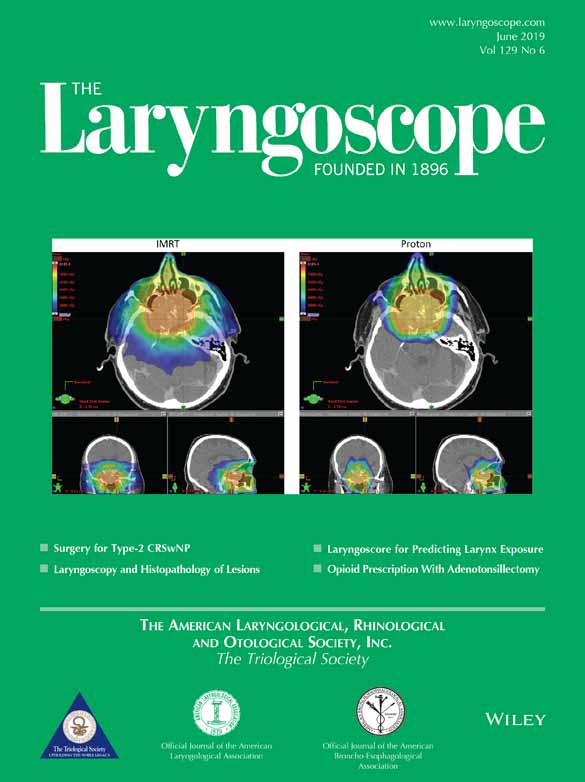Laryngeal Botulinum Toxin Injection for Vocal Tremor: Utility of Concurrent Strap Muscle Injection
Presented at the American Laryngological Association Meeting at the Combined Otolaryngology Spring Meetings, April 18–22, 2018.
The authors have no funding, financial relationships, or conflicts of interest to disclose.
Abstract
Objectives/Hypothesis
Vocal tremor is a neurologic disorder that can be treated with laryngeal botulinum toxin injections (LBTX). We sought to describe our experience with thyroarytenoid and concurrent strap muscle injection.
Study Design
Retrospective chart review.
Methods
A chart review was performed of all patients with a primary diagnosis of vocal tremor treated with LBTX from 2012 through 2017.
Results
Twenty-one patients were included (mean age 69 years, 100% female). Thirteen patients (62%) had a minor component of spasmodic dysphonia in addition to their tremor. Fourteen patients had vertical and horizontal components to their tremor, and two had horizontal tremor alone. The remaining five patients did not have clear characterization of their tremor. A total of 49 injections were reviewed (25 thyroarytenoid [TA], 24 thyroarytenoid and strap muscle [TA+S]), and patients reported subjective voice benefit with 48 (96%) of these (92% TA, 100% TA+S). When available, the postprocedural change from baseline Voice Handicap Index-10 and Consensus Auditory Perceptual Evaluation of Voice scores were calculated (mean overall: −1.9, −7.8; TA: −2.7, −3.5; TA+S: −1.4, −10.3, respectively). Subjective patient improvement ratings (scale 0%–100%) were obtained for 46 injections, with a mean of 70% improvement per injection. Of patients with both horizontal and vertical tremor, outcomes were improved with TA+S injection versus TA alone (mean improvement 74% vs. 35%, P < .005).
Conclusions
There is utility in the characterization of vertical and horizontal components of vocal tremor. Patients with both appear to have increased benefit with injection of strap muscles in addition to thyroarytenoid muscles.
Level of Evidence
4
Laryngoscope, 129:1433–1437, 2019




